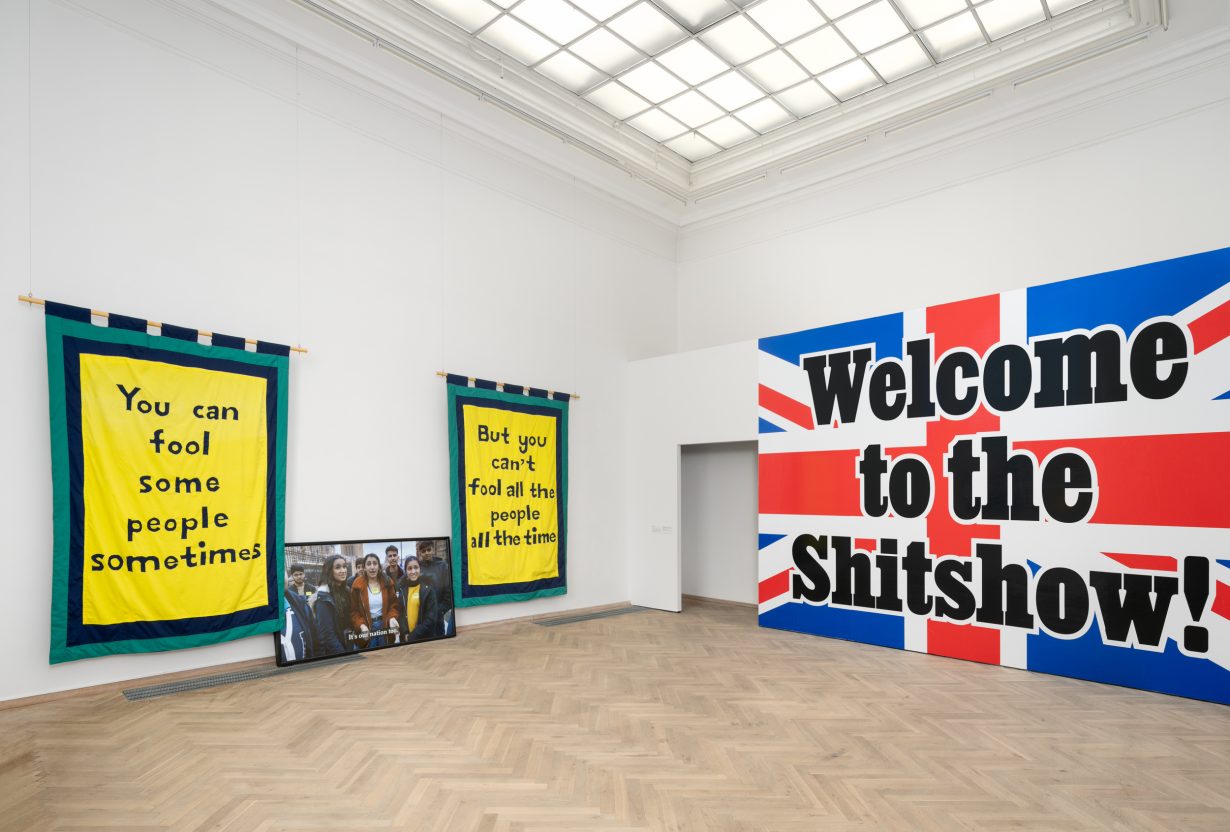The recent coronation of King Charles III made it clear that artists have long reinvented history, and revealed how easily fiction can morph into fact

Out of what is England’s identity constructed? A nation is forged not just from the cartographic borders that define it but from cultural traditions and shared customs that are rooted in stories passed down through generations. And it is forged from the rituals that imbue their continued usage in the present day with a sense of eternal continuity. But what happens when these stories are not developed over the years and centuries, and are instead confected today, to create a manufactured sense of indigeneity?
Britain is a nation constantly looking to a rosy vision of its past, whether in the Gothic revivalism of nineteenth-century churches or the Pre-Raphaelites’ rejection of contemporary British art in favour of the early Renaissance. In 1851 John Ruskin wrote encouragingly of the group: ‘If they adhere to their principles, and paint… with the earnestness of men of the thirteenth and fourteenth centuries, they will… found a new and noble school in England’. This sentimental turn can be seen in the Romantic pastoral visions of William Blake or in recent developments such as the new Dorset town of Poundbury, under construction since the early 1990s. A Frankensteinian mishmash of architectural styles, from Georgian to classical to country cottage, with a misty-eyed nostalgia for a bygone time that never truly existed, Poundbury is based upon the principles laid out by the former Prince of Wales in his 1989 urban planning treatise A Vision of Britain. Meanwhile, the crowning of the prince as King Charles III this May at Westminster Abbey was a ceremony filled with all the ancient (and ancient-looking) pomp to be expected of a ritual that has taken place within the same four walls since 1066 – although numerous elements, from the oil anointing of the king’s body to the wielding of two swords, were introduced less than 400 years ago.

An official invitation issued to the public a month before the coronation featured the face of the Green Man emerging from a wreath of wildflowers. Described in the accompanying announcement as ‘an ancient figure from British folklore, symbolic of spring and rebirth, to celebrate the new reign’, the character quickly drew the ire of historians and specialists in folklore and popular religion, who pointed out that the figure was created in the early twentieth century by writer and folklorist Lady Raglan, who linked the decorative trope of ‘foliate heads’ on churches with the historic naming of pubs around the country as the ‘Green Man’. The newfangled figure quickly caught on as a supposed longstanding symbol of English mythology.
‘English culture has been shaped by a recurrent harking back to a golden age, a time of perceived comfort, stability, safety or community spirit,’ art historian Susan Owens writes in Imagining England’s Past, published this past April, which examines the country’s invented histories from the eighth century to the present day. ‘It is perhaps a little sobering…’, she argues, ‘to reflect on how much of a sense of national history has been shaped by fiction’. This is truer than ever post-Brexit, which, in itself, demonstrated how folklore and popular culture can be manipulated to tell populist stories that narrow the view of what the country could and should be through a vision of an idealised past that never truly existed. It seems inevitable that when a nation falls on hard times, whether economic, political or social, the slippery tales of the ‘good old days’ emerge easily from between the cracks, like water from a burst pipe.

These uneasy contradictions offer rich ground for artists to explore. Mythical figures of English folk history stalked Vitrine gallery in London in Jamie Fitzpatrick’s exhibition Psycho Home-Counties this spring, which featured animatronic sculptures standing over slain dragons amid the rolling hills of Albion while being torn apart by packs of vicious dogs. They offer a surreal and crumbling vision of a nation constructed from a patchwork version of itself that cannot be materialised, where rampant inequality is masked by the assertion that we are all united by one shared cultural heritage. This is echoed by Jeremy Deller in his solo exhibition Welcome to the Shitshow!, on display at the Kunsthal Charlottenborg in Copenhagen until 6 August, in which he interrogates England’s troubled, constantly shifting relationship with its own history. ‘For our national identity to be a bit of a mystery is no bad thing,’ he writes in Art is Magic, a monograph published in May, ‘as it gives the public space to make up their own versions of who they are.’
That reinvention can result in an all-too-hazy view, a synthetic amalgamation created in the service of nationalism and authoritarianism, where new myths and so-called traditions are presented as native customs in a gesture towards something called Englishness. Yet a revisionist attitude also has the potential to disrupt the notion of a singular, sacred history, one that is frequently exclusionary and rooted in colonial and racial biases. These fabrications show just how mutable history really is, given shape by the decisions made in the present. Perhaps now is the time for new stories to be told.